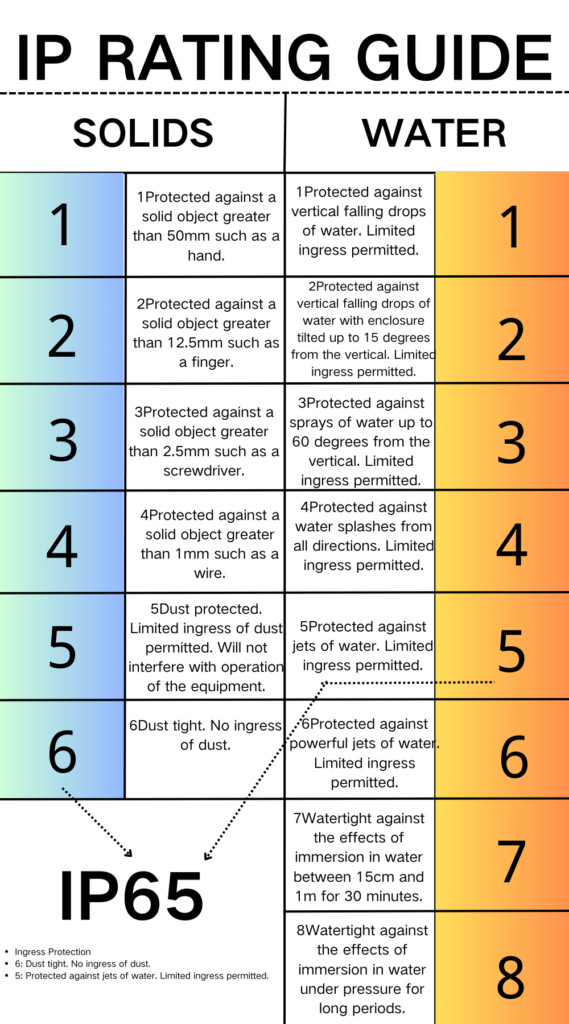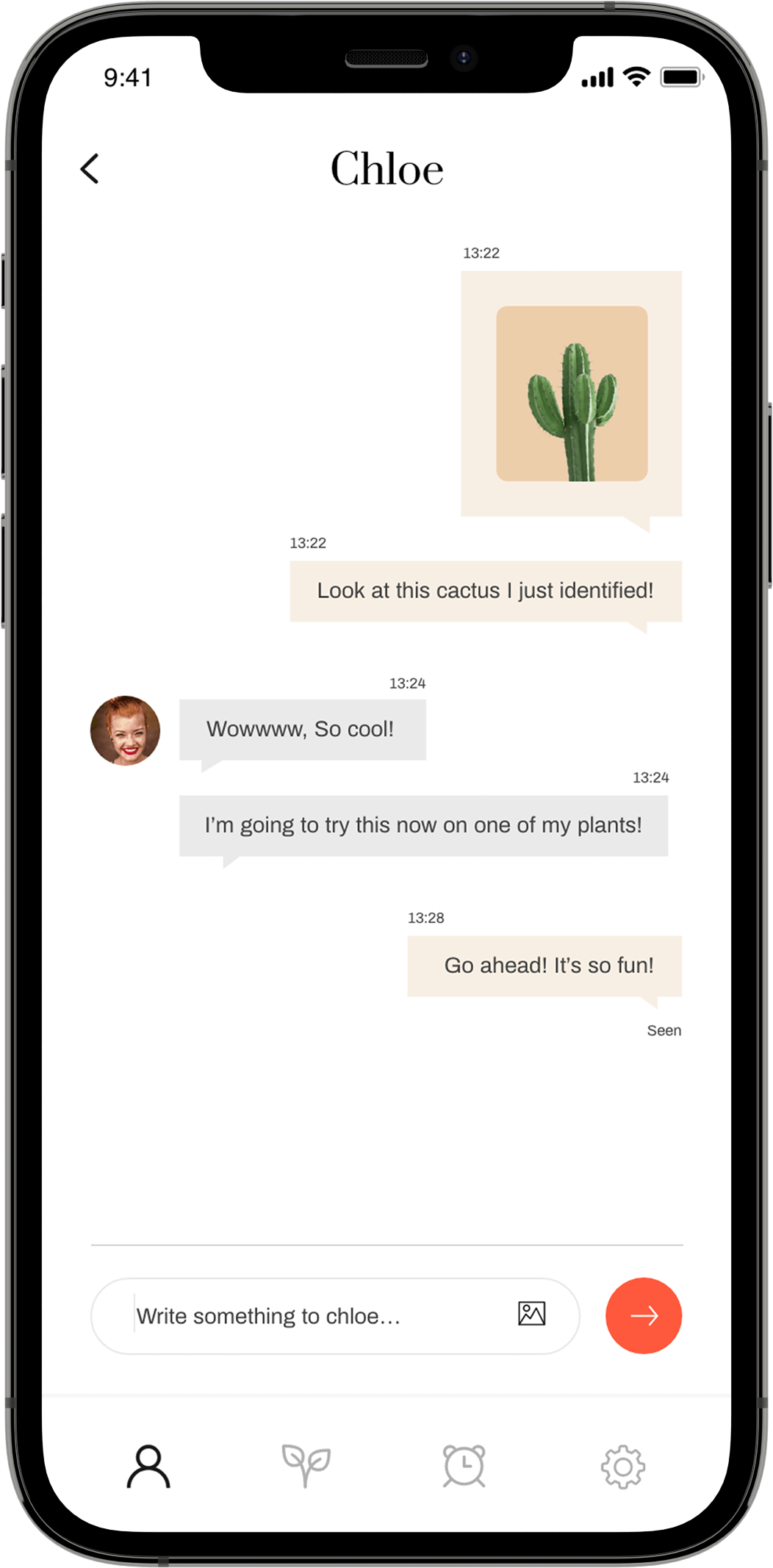Introduction
Outdoor lighting plays a crucial role in enhancing the aesthetics, safety, and functionality of spaces. Whether it’s illuminating a garden pathway, providing security around a building, or lighting up a driveway, outdoor lights are exposed to various environmental elements. These elements—rain, dust, and extreme temperatures—can affect the performance and lifespan of lighting fixtures. To ensure your outdoor lights can withstand these conditions, it’s essential to understand their Ingress Protection (IP) ratings. IP ratings provide a standardized method for evaluating the level of protection offered by lighting fixtures against the intrusion of solid particles and moisture.
1. Understanding IP Ratings
1.1 Definition of IP Rating
IP stands for Ingress Protection, and it refers to the degree of protection a lighting fixture offers against the intrusion of dust, dirt, and moisture. The IP rating system uses two digits. The first digit indicates the level of protection against solid particles, while the second digit represents the protection against moisture. The higher the number, the better the protection.
1.2 Importance of IP Ratings for Outdoor Fixtures
Outdoor lights are subjected to various environmental elements. Whether it’s dust blowing in the wind, rain from a storm, or even the potential for submersion in a pool or pond, the IP rating helps ensure that your fixtures remain functional and safe in all conditions. By selecting a light with the appropriate IP rating, you can guarantee that it will perform reliably over time, regardless of the elements it faces.
2. Breakdown of IP Rating Components
2.1 First Digit: Solid Particle Protection
The first digit of the IP rating indicates how well the fixture is protected against solid objects like dust, dirt, and debris. It is rated on a scale from 0 to 6:
- 0: No protection against solid objects.
- 1: Protection against objects larger than 50mm (such as a hand).
- 2: Protection against objects larger than 12.5mm (such as fingers).
- 3: Protection against objects larger than 2.5mm (such as tools or wires).
- 4: Protection against objects larger than 1mm (such as small wires).
- 5: Dust-protected; some dust may enter but not in sufficient quantity to affect the operation.
- 6: Totally dust-tight; no dust can enter.
2.2 Second Digit: Moisture Protection
The second digit of the IP rating reflects the level of protection against moisture, including water splashes, rain, or submersion. It is rated from 0 to 9:
- 0: No protection against moisture.
- 1: Protection against vertically falling drops of water (e.g., condensation).
- 2: Protection against direct sprays of water up to 15° from the vertical.
- 3: Protection against sprays of water up to 60° from the vertical.
- 4: Protection against water splashes from any direction.
- 5: Protection against low-pressure jets of water from any direction.
- 6: Protection against strong jets of water from any direction.
- 7: Protection against immersion in water up to 1 meter depth.
- 8: Protection against immersion in water beyond 1 meter depth.
- 9: Protection against high-pressure, high-temperature jets of water.

3. Recommended IP Ratings for Different Outdoor Applications
3.1 General Outdoor Lighting
For typical outdoor lighting applications like garden lights, pathway lights, and landscape lighting, a minimum IP44 rating is recommended. This rating provides adequate protection against solid objects larger than 1mm (dust) and splashing water from any direction. IP44 is suitable for most general outdoor lighting needs, where exposure to dust and moisture is moderate.
3.2 Security Lighting
Security lights are often exposed to harsher weather conditions and need a higher level of protection. A rating of IP65 is recommended for security lighting. This rating provides full protection against dust (IP6) and high-pressure jets of water (IP5), making it ideal for lights that must endure rain, snow, and high winds.
3.3 Specialized Lighting Applications
For more specialized outdoor lighting, such as underwater lights or lights used in extreme environments (e.g., near swimming pools), a higher IP rating is necessary. For underwater lights, an IP68 rating is ideal. This rating protects against dust and allows the fixture to be submerged in water for extended periods. Similarly, any fixture exposed to extreme moisture, such as in marine environments, should have an IP68 or higher rating to ensure it can withstand prolonged exposure to water.
4. Benefits of Choosing the Right IP Rating
4.1 Longevity and Durability
Selecting an outdoor light with the appropriate IP rating ensures that the fixture is protected from environmental hazards, leading to a longer lifespan. High-rated fixtures are designed to withstand exposure to harsh conditions, reducing the need for frequent replacements.
4.2 Safety Considerations
Proper IP ratings prevent electrical failures and short circuits caused by moisture intrusion, which could lead to hazards like electrocution or fires. Ensuring your outdoor lighting is adequately protected against water and dust is crucial for maintaining safety in both residential and commercial environments.
4.3 Cost Efficiency
Although fixtures with higher IP ratings may have a higher upfront cost, they can save money in the long run. By reducing the need for maintenance and frequent replacements due to environmental damage, investing in high-quality outdoor lighting with a sufficient IP rating offers cost savings over time.
5. Common Misconceptions About IP Ratings
One common misconception is that lower-rated fixtures, such as those rated IP20 or IP44, can handle more severe conditions than they are designed for. It’s essential to recognize that not all lights are suitable for outdoor use, even if they are marketed as such. Another myth is assuming that indoor lights can withstand outdoor environments. Indoor fixtures are not designed to resist moisture and dust as effectively as those with higher IP ratings, making them vulnerable to damage when exposed to the elements.
6. Conclusion
Understanding and selecting the right IP rating for your outdoor lights is essential for ensuring durability, safety, and long-term cost efficiency. By choosing lights with an appropriate level of protection against dust and moisture, you can ensure that your outdoor spaces remain illuminated safely and effectively. When considering your lighting needs, assess the environmental conditions and select fixtures with the proper IP rating to ensure they will withstand the elements.
Additional Resources
For further reading on specific types of outdoor lighting and their applications, consult the following resources:
- Best IP Ratings for Outdoor Lighting
- Choosing the Right IP Rating for Outdoor Lights
- Understanding IP Ratings for Outdoor Lighting
For personalized consultations or advice on selecting outdoor lighting solutions, feel free to reach out to experts in the field.
Citations:
[1] What is the Best IP Rating for Outdoor Lighting?
[2] Choosing the Right IP Rating for Outdoor Lights
[3] Understanding IP Ratings for Outdoor Lighting
[4] IP Rating for Exterior Lights
[5] Buy Outdoor Lighting with Confidence
[6] Do You Know What Is IP Rating?
[7] Quick Guide: IP Rating for Outdoor Lighting

